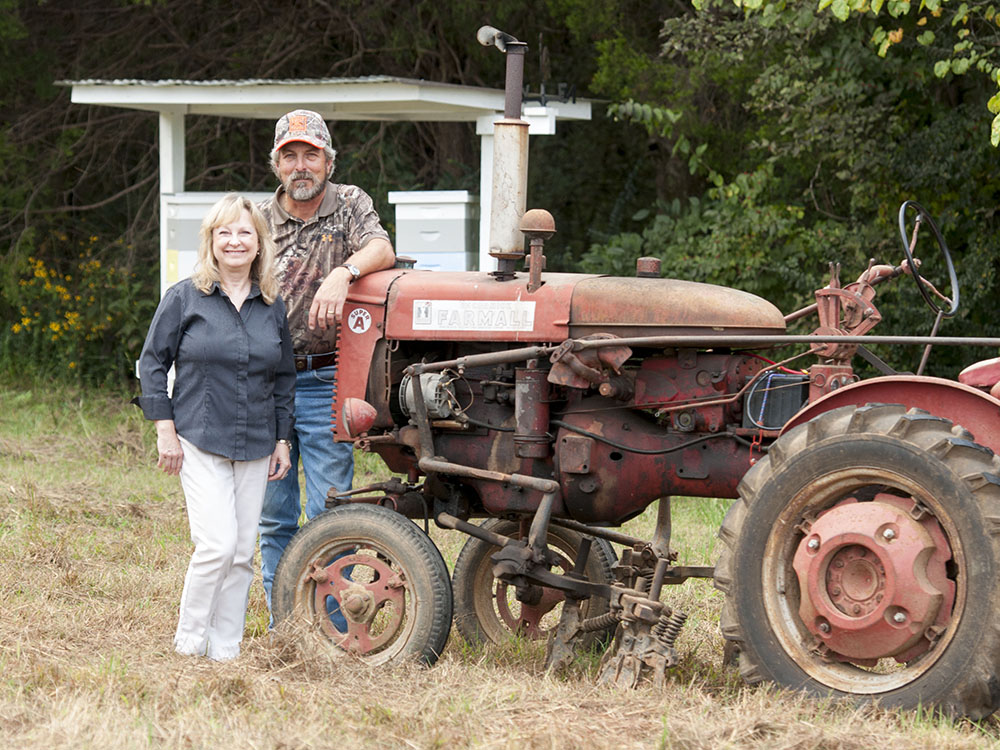A reader recently requested that we write a blog post for those who aren’t yet living on their own land, but are working towards their dream to own their own farm or homestead. They asked for recommendations on action steps they can be taking now to get started.
We love that idea!
We’ve put together 5 action steps you can take — right now! — to prepare for one day owning your own farm or homestead.
1. Make getting your finances in order a priority.
Getting your financial priorities in order is our #1 recommendation. If you only choose one action step on this list, choose this one!
For instance, we recommend getting out of debt for everything but your mortgage. After all, you don’t want to be burdened with debt as you begin your homestead. Financial freedom allows you to follow your dreams and avoid being forced to make difficult decisions out of financial necessity — like selling part of your land just to make payments. While pursuing your goals of owning a farm or homestead, don’t quit your day job until your finances and debts are in order.
When my husband, Olin, and I decided to move to Stoney Creek Farm, we made paying off all our debt a major priority.
We had a farm loan on the land, but purchased the house and barn with cash, not credit. We bought only used farm equipment. We saved where we could and only invested profits into new business endeavors, never relying on debt lines to fund our business. We stayed at our full-time jobs as we began building income streams from our farm.
Envisioning the life we could have once we were debt-free allowed us to stay laser-focused on paying off our final debt: the farm loan. Dave Ramsey and Money Wise were two financial resources that we followed. By applying the principles we learned, we were able to become debt free much sooner than expected.
In 2013, I was able to leave my corporate job to focus my full efforts on sharing Stoney Creek Farm with the community through our U-Pick Garden, educational resources, and more. Olin was able to leave his full-time job a few years later, and now we both get to spend our time enjoying a slower life on the farm!
But the freedom we feel now is all thanks to our commitment to becoming debt free.
We highly encourage anyone who is dreaming of a life of more joy and less stress to get serious about financial matters. The freedom waiting for you on the other side is absolutely worth the work of paying off your standing debts.
2. Decide your “why.”
Knowing the mission — your “why” — behind your farm or homestead serves as an important guide for making all other decisions.
For instance, will you be starting a business on your homestead to serve the community or just beginning your own self-sufficient life?
County codes may affect zoning, and you may need a business license to operate. When choosing a route for your business, it’s important that you choose something you will enjoy investing the next 5 years of your life in. We also recommend having a seed of experience in that idea to help you get started.
Exploring several different business ideas? Visit or shadow someone who is already doing that type of business, like raising dairy goats, renting garden plots, offering a horse boarding service, etc. This gives you the opportunity to experience it up close to see if it’s something you’d be interested in.
If your time allows, we also recommend looking into WWOOF — a worldwide organization that links volunteers with farms in need of help. Volunteers interested in agriculture offer help on a farm or homestead, in exchange for the host farm providing meals and accommodations.
Keep in mind:
Your mission and your “why” may change over the years! Ours certainly has. As you dive into building your dream life on a farm or homestead, you may discover new passion and interests along the way. Let your mission be fluid, and adjust as necessary.
3. Determine where you want to live.
First things first… where do you want to live? Do you research now on areas that you are considering. Is the land affordable? What is the crime rate? How far away are you from essential services, like grocery stores and gas stations? Who would be your neighbors in that area? What are the county codes and compliances?
You want to know this information before you purchase a plot of land — not after.
4. Determine your land needs.
Before you begin searching for land, it’s important to know how much land you will need. This, of course, will tie into your mission for your farm or homestead. Are you hoping to raise pasture animals? In that case, you’ll need more acreage than someone whose goal is to only have a U-Pick Garden.
Do you want the land you purchase to already have existing structures, like a home or barn, or do you want a blank canvas to build everything yourself?
We recommend working with a great realtor familiar with the area you’re looking for land within. They’ll be able to help you find the perfect spot that fits within your budget.
5. Research, research, then research more!
Learn from our mistakes!
Stoney Creek Farm is on an agricultural green belt. In the state of Tennessee, as long as you have 15 acres and can earn $1500 annually in gross income from agricultural products, you can maintain greenbelt status, which offers significant tax benefits.
So when we started Stoney Creek Farm, we were looking for income streams to help us meet this gross income requirement.
We looked at cutting hay, raising meat goats, and other options. We finally landed on an orchard. People could come pick produce, or we could sell the fruit ourselves. What could go wrong?
We bought a bunch of trees and put ‘em out in the middle of winter. We planted granny smith, red delicious, crabapple, pears, peaches… all kinds of fruit trees. Boy, we were READY!
Of course, fruit trees take a while to bear fruit. Fruit production can take up to 5 years for some trees. We were really tickled and couldn’t wait to enjoy the fruits of our orchard efforts.
Only, we hadn’t done our research.
You see, our whole property is covered in cedar trees.
Little did we know that fungal spores from cedar trees could infect fruit trees with what’s called cedar rust. This infects apple trees, ruining the fruit and spreading to the leaves and bark.
Our excitement was dashed—most of our trees didn’t produce fruit at all, and the ones that did produce fruit weren’t exactly profit-worthy. To treat the rust, we would’ve had to spray them with all types of fungicides and pesticides, and we didn’t want that. On top of that, we had a hungry family of squirrels on our property that would steal the new-growth fruit in the night. I’m sure that squirrel family had themselves a banquet feast that winter.
We learned our lesson the hard way: always do your research first.
So as you begin to explore different ideas for your own farm or homestead, don’t skimp on the research. Use this time now to learn as much as possible — the more you know, the less likely you are to make costly mistakes like we did.
Get in depth guidance in our book, Dirt Rich.
Our book, Dirt Rich, goes into detail on all of these action steps + more!
We wrote this book to serve as a guide for anyone considering making the jump to owning their own farm or homestead. It chronicles our own adventures — and shares with you our lessons and mistakes — since making the transition to a life of more joy and less stress at Stoney Creek Farm more than 15 years ago.
You can order the book from our online farm store or from Amazon. It’s also available as a Kindle e-book edition.



